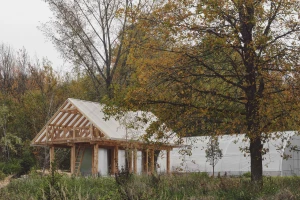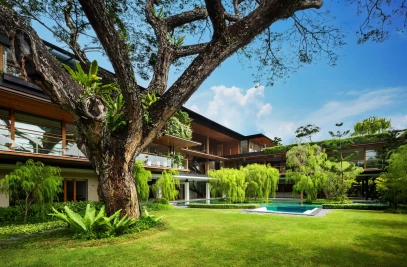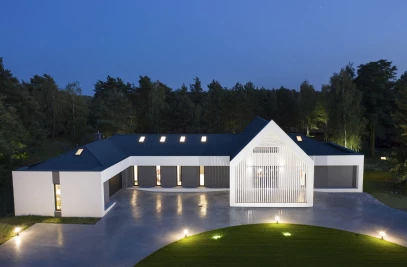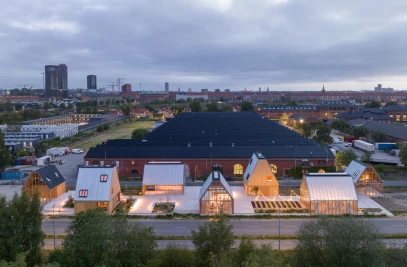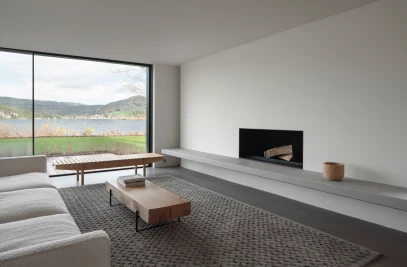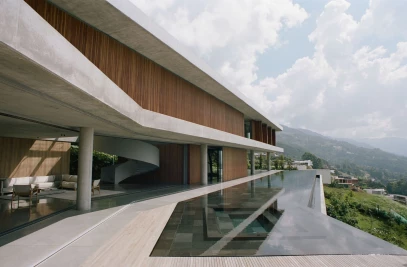The Orchid Pavilion for Fundación Casa Wabi merges Oaxacan craft with Japanese philosophy. This permanent wooden structure was designed by Centro de Colaboración Arquitectónica (CCA), a studio established by architect Bernardo Quinzaños. The pavilion is dedicated to the conservation of orchids in Oaxaca, Mexico, and celebrates “the strong interplay between the biological and cultural diversity of the landscape,” says CCA.
Fundación Casa Wabi is a non-profit organization that fosters a dialogue between contemporary art and local communities; the foundation is perhaps most famous for its Tadao Ando-designed headquarters on the outskirts of Puerto Escondido, Oaxaca.
The Orchid Pavilion, sited in the same location, is based on research by CCA that creates an optimal setting for orchids to flourish — this is described by the studio as “a humid, partially shaded, and well-ventilated environment.” While this led to the development of technical features that maintain the pavilion’s functionality, it was the project’s deeper meaning that inspired the design: “the inspiration for the project came from exploring the relationship between the Japanese philosophy of Wabi-Sabi and the rich traditions of the Oaxacan coast,” explains CCA. Wabi-Sabi finds beauty in imperfection and simplicity; eschewing the non-essential, it prizes neutrality and restraint. This particular philosophy chimes with Oaxaca’s vernacular, the region’s rich cultural heritage and vibrant traditions, and its exceptional artisanship.
CCA drew inspiration from the philosophy of Wabi-Sabi, yet the Orchid Pavilion’s guiding concept came from the Japanese word Ikigai. This concept relates to having a sense of purpose and a reason for being. The pavilion embodies the idea of Ikigai by fostering a meditative and harmonious space for both orchids and visitors alike.
CCA’s design for the pavilion has three key elements:
1. Functional simplicity — here, twelve concrete-based humidifiers make use of gravity to create a controlled humid environment, ensuring the orchids thrive without the need for manual watering.
2. Sustainable materials — locally sourced wood and custom-made concrete ceramic pieces, fired in high-temperature kilns, form the structure. “These materials echo the vernacular traditions of the region, while adhering to sustainable practices,” says CCA.
3. A sanctuary for reflection — the pavilion encourages visitors to reconnect with their own sense of purpose, surrounded by nature’s sensory experiences.
The pavilion is a simple triangular gable roof structure and is partially buried. It is woven with wooden poles and palm, creating a membrane that helps to reproduce the required humidity, shade, and ventilation — each element is essential to the cultivation and reproduction of orchids in Oaxaca.
The twelve clay humidifiers in the form of inverted pyramids are distributed along the ridge of the roof — filled with water, these basins release small droplets that are collected at ground level in permanently humid concrete trays. The dripping water is protected from direct sunlight by the woven membrane, creating a warm and fresh environment. The orchids absorb moisture and nutrients carried through the air by feeding on their aerial roots. “This process not only sustains the orchids, but also eliminates the need for manual irrigation,” says CCA. The water that feeds the orchids is also consumed by visitors to the pavilion.


































